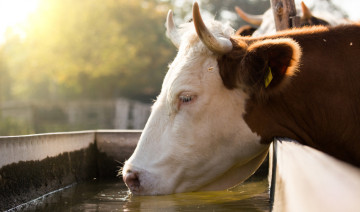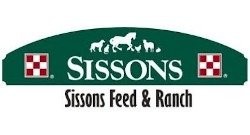
Tips to Curb Heat Stress in Cattle
Heat stress can be very damaging, even deadly, to any cattle herd, no matter how fit or healthy the animals may be. By better understanding heat stress, you can take easy and effective steps to curb its effects and keep your livestock cool and comfortable even in the harshest heat waves.
What Is Heat Stress?
High temperatures are more than just uncomfortable for cattle, they can be dangerous. Heat stress is the first state of heat-related disorders, and the beginning of difficulties such as:
- Lessened milk production
- Weight loss or worsening of overall condition
- Respiratory distress
- Miscarriage
- Lowered fertility and reduced conception
Cattle do not sweat efficiently, and hot days – with temperatures reaching 80 degrees during the day or remaining over 70 degrees at night – can trigger heat stress. If the humidity level is high, heat stress may even begin at lower temperatures. Very heavy cattle or those in a crowded feedlot are more susceptible to heat stress, as are cattle with black hides that will feel a greater impact from solar radiation. It is also important to remember that cattle can remain overheated for several hours after sunset, as the heat generated from the rumen’s digestion will continue to elevate an animal’s core body temperature.
Symptoms of heat stress in cattle include:
- Elevated respiration rate
- Open mouth panting or labored breathing
- Excessive drooling
- General restlessness
- Trembling and unsteadiness
As soon as animals begin to show these symptoms, it is critical to take steps to ease heat stress. The faster the condition is treated, the more likely it is that cattle can recover quickly and fully.
Curbing Heat Stress in Cattle
There are many ways to help cattle keep cool when temperatures rise. Easy ways to mitigate heat stress include:
- Working, transporting, moving, or processing cattle in the early morning hours when the air temperature is at its coolest so the animals do not overheat as quickly.
- Providing abundant cool, fresh, clean water to all animals, and ensuring each animal has adequate access to watering troughs.
- Adding extra troughs to provide adequate water to larger herds. This will also help keep the water cleaner and more palatable.
- Positioning water cisterns or troughs in the shade to keep the water supply cooler. Cattle will naturally drink more if the water is a cool, but not frigid, temperature.
- Providing shade in pastures, whether from trees, hedges, sails, fences, or open sheds. Roofed shade should be at least 8-10 feet tall to permit good air circulation.
- Pasturing cattle in larger, grassier fields so they can move about more freely with more personal space. A grassier pasture will also be naturally cooler than a muddy one.
- Feeding cattle later in the day, as their core temperature peaks from digestion approximately 4-6 hours after feeding. This will time their peak core heat with the coolest overnight hours.
- Taking steps to minimize flies. A heavy fly infestation will cause cattle to bunch up for protection, which will increase overall body heat and prevent cooling.
- Utilizing sprinklers or heavy misters with intermittent timers to wet animals’ hides and promote evaporative cooling.
- Wetting the pasture to promote better cooling of the ground, which will help the animals stay cooler as it evaporates.
- Ensuring good air circulation by not blocking natural breezes, or by installing fans in pens, sheds, or barns to keep cattle cool.
Ideally, as many steps that are practically possible should be taken to curb heat stress in cattle. Because overheating can quickly become dangerous, taking more steps to mitigate heat will keep the animals more comfortable and reduce the risk to the herd, even on the hottest days.
